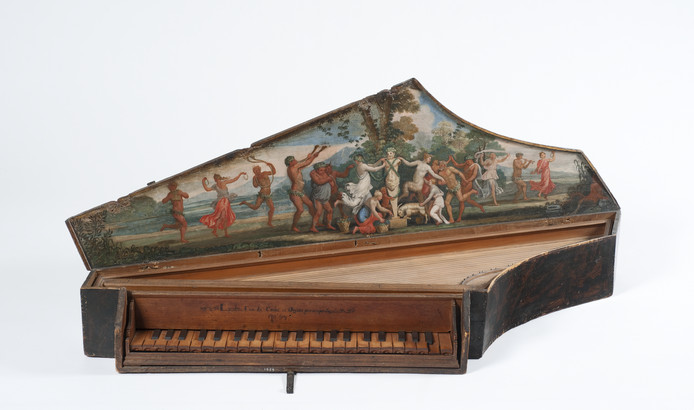The fundamental objective of REM@KE is to reconstruct the sound and the function of lost musical instruments and to develop new theoretical, empirical, and practical tools to explore the embodied musical knowledge emerging from the relationships between these instruments and their performers.
Among the great variety of objects of the past that inhabit museums, musical instruments are in a category of their own: if kept silent, music cannot be; if played, their materiality is endangered. These instruments are at risk of being silenced forever, as their conservation becomes the priority. To ensure access for future generations, a radical intervention is needed, to comprehensively study how they sounded and played when they were new, as well as their design principles and construction processes, so that they may be reconstructed, played, and heard both materially and virtually.

Zenti Spinet – 1637 – Musical Instrument Museum, Bruxelles, Europe – CC BY-NC-SA.
To investigate the sound of these objects, we have developed a new research framework Cognitive and Digital Organology (CaDO) that builds new bridges between organology, performance practice research, and cognitive sciences. CaDO will study the people involved with music, the instruments producing the sounds (interlocked into a system that evolves over time), in a space that is social, material, and digital. Embodied cognitive science will be used to examine how resources from the bodies of builders, players, educators, and listeners determine their musical experiences, fostering new relationships that are formed and transformed in acts of musicking. Thus, CaDO can inspire richer understandings of the experiences of those who engage with historical musical instruments and their replicas.
By reinterrogating the relationship between instrument, gesture, and music REM@KE aims to reclaim the sound of historical instruments, improve our understandings of how we engage with them, and guarantee a better future for them.